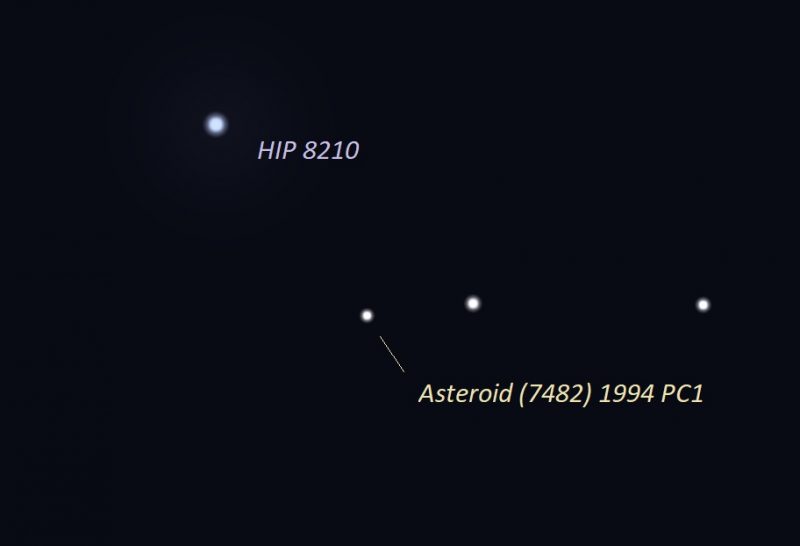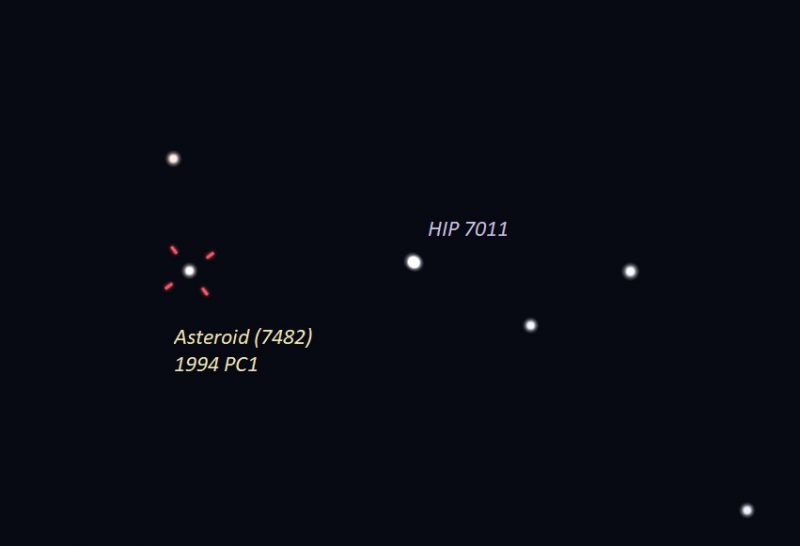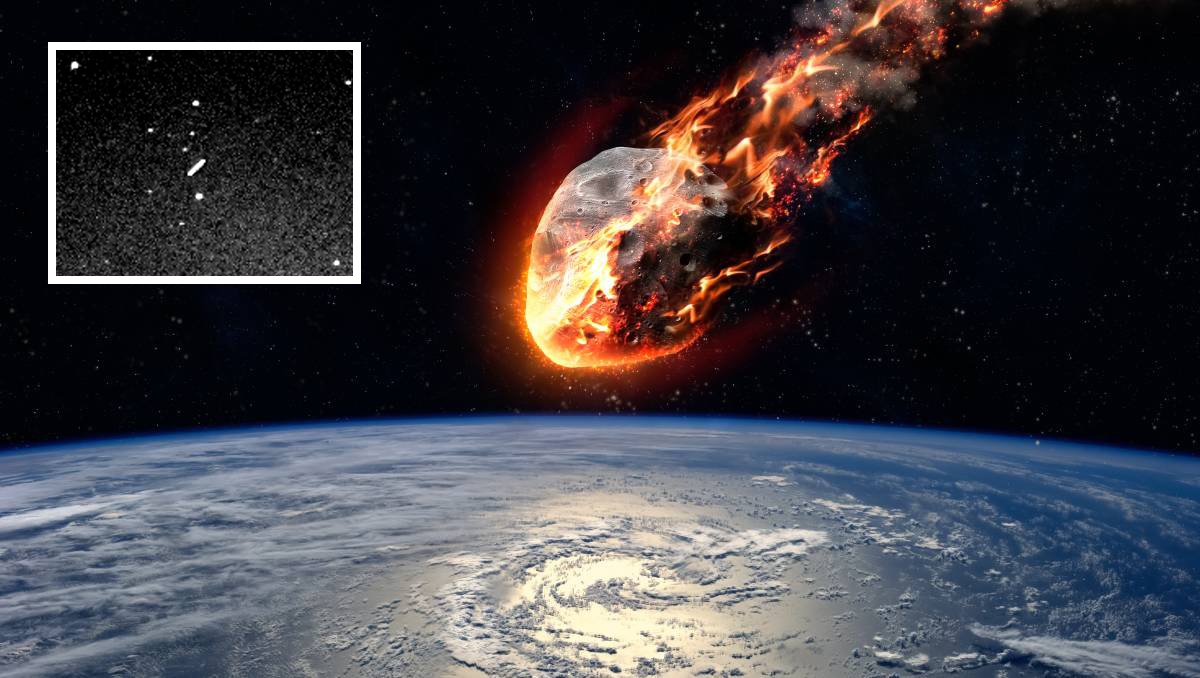On January 18, 2022, a huge rocky asteroid will safely fly by Earth. Nearly twice the height of the Empire State Building, it is projected to be 3,280 feet (approximately 0.6 miles) in length.
This asteroid has been known since 1994, as shown by its designation as (7482) 1994 PC1. In light of its size and proximity to Earth, it has been designated as a Potentially Hazardous Asteroid.
Approximately every 600,000 years, an asteroid of this magnitude crashes Earth. Although 1994 PC1 will be near to us in 2022, we have nothing to worry about from this asteroid. Then there is this: There is the possibility that amateur astronomers using backyard telescopes may see it.
The closest approach is at 4:51 pm EDT on January 18, 2022, the closest day and time to Earth (21:51 UTC). For at least the next two hundred years, scientists have projected that this asteroid’s trajectory will bring it closest to Earth.
About 5.15 times as far away as the Earth is from the moon, the fast-moving asteroid will fly by Earth in a little over a million miles (1.93 million kilometers). That is a safe distance, but it is also near enough for a modest backyard telescope to provide a good view.
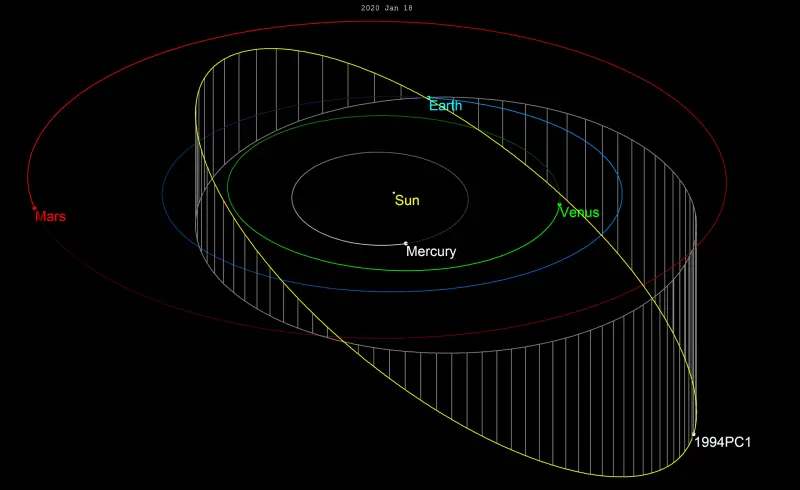
Near-Earth #asteroid 1994 PC1 (~1 km wide) is very well known and has been studied for decades by our #PlanetaryDefense experts. Rest assured, 1994 PC1 will safely fly past our planet 1.2 million miles away next Tues., Jan. 18.
Track it yourself here: https://t.co/JMAPWiirZh pic.twitter.com/35pgUb1anq
— NASA Asteroid Watch (@AsteroidWatch) January 12, 2022
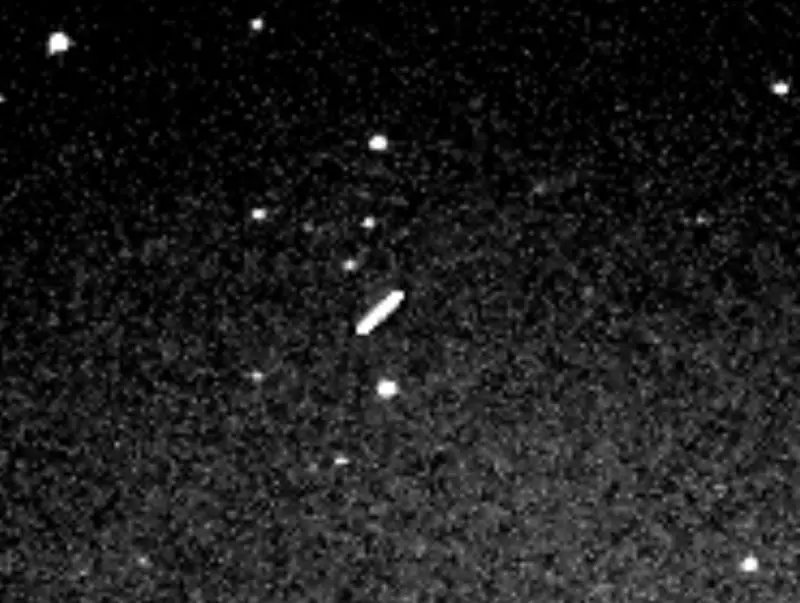
Asteroid 7482 has the potential to do harm
The asteroid (7482) 1994 PC1 was discovered on August 9th, 1994, by Robert McNaught at the Siding Spring Observatory in Australia. Astronomers were able to locate the space rock by comparing it to photos taken in September 1974. Its orbit has been well-observed for 47 years.
43,754 miles per hour (19.56 kilometers per second) is the speed at which the enormous space rock is moving toward Earth. Amateur astronomers will be able to see the speedy asteroid thanks to its high speed.
During the course of the evening, it will seem like a bright dot of light passing in front of the background stars. At a magnitude of roughly 10, Asteroid (7482) 1994 PC1 will be visible. Observers using a 6-inch or bigger home telescope and a dark sky location may make reasonable progress on a target of 10th magnitude.
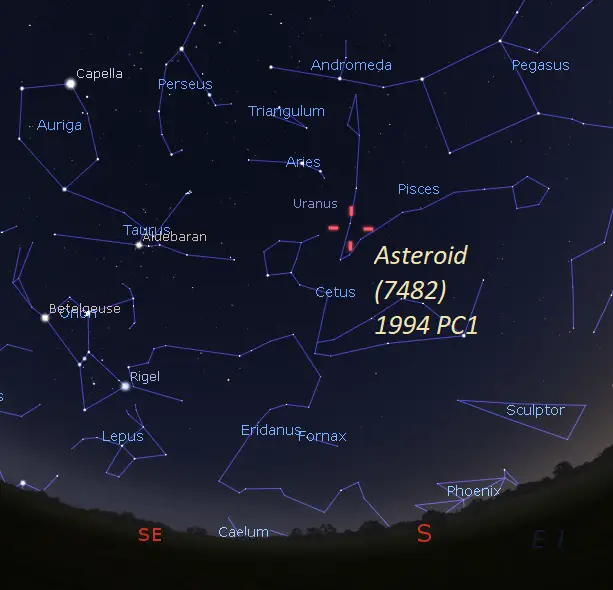
With a telescope, how do you view it?
Small telescopes positioned in the right direction at the right time and at the right place may allow amateur astronomers to see the asteroid (7482) 1994 PC1. Hours after the January 18 near approach, home telescopes are the greatest option for North American spectators to glimpse the massive asteroid (see charts below).
Because of its size and closeness, you should be able to notice the movement of the space rock. The asteroid’s motion will be more apparent when it passes near to a star with a fixed backdrop.
Another method for finding the asteroid is to connect a camera to the telescope and capture 30 to 45-second exposures. Use a star or other object in the asteroid’s path as a point of reference for the camera and telescope.
The charts below can assist you in locating stars of interest. Shorter exposures reveal the asteroid’s motion in a picture as a single point of light, whereas longer exposures show the asteroid moving like a streak of light.
In spite of the January 18th full moon, modest telescopes will have no problem seeing the asteroid since the moon will be far away in the sky from the region where the space rock will be. An expert astronomer believes that asteroid (7482) 1994 PC1 will be one of the simplest asteroids to find if the telescope is set up properly.
It is sad that the DSS-14 radar antenna at California’s Goldstone Radar will not be able to observe asteroid (7482) 1994 PC1 because of maintenance.
Finder maps for asteroid 7482 on January 18
